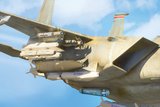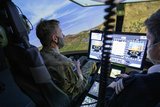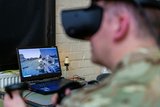How commercial innovation is reshaping military operations (Studio)
Brought to you in partnership with Dell Technologies OEM Solutions & Intel
Data is now a crucial military resource. The ambition to connect sensors from all military services into a single network to reduce the total decision loop time and create a decision advantage is the driving aim of current military transformation efforts.
But as armed forces grapple with the technological challenges of multi-domain operations concepts, specialists like Dell Technologies can help them embrace the required digital transformation.
Damian Murphy is an Enterprise Technologist at Dell Technologies OEM Solutions.
He points to the rise of edge computing, where data is processed at the network’s periphery, as close to the source as possible, which is essential in an increasingly dispersed operational environment.
‘We see edge in 5G, we see edge in industrial, and we see edge in healthcare – but we definitely see the edge in defence,’ Murphy says.
To fully exploit the advantages of edge computing, military customers must turn to a second and related technological trend.
Artificial intelligence can help operators handle and interpret vast quantities of data, realising the many benefits it provides and helping to deliver genuine information advantage to the military.
However, this is a complex field, Murphy notes, with defence customers embracing an array of technological concepts.
To navigate this terrain, Dell Technologies benefits from close partnerships with a range of companies that focus on the cutting edge of such technologies.
One example is Intel Corporation. According to John Brynildson, a Sales Specialist for Federal and Aerospace at the chip manufacturer, one of the most exciting technological innovations today is the convergence of information technologies (IT) with operational technology (OT).
‘It’s becoming more and more integrated, with compute resources being deployed everywhere,’ Brynildson says. ‘It’s pervasive.’
This integration is exemplified through the “Edge to Cloud” vision shared by Intel and Dell, Brynildson says. Knowledge is data, and to provide a decision advantage the warfighter must have access to data in all environments, especially at the edge, whether carried by a person, in a vehicle, or on a ship.
Connectivity with cloud networks means ‘having a seamless environment where data is at your fingertips no matter where you are in the world … that is very exciting, and that’s really this convergence of IT and OT’.
Brynildson points to the growth of 5G private networks, which are increasingly sparking interest from government customers.
He explains that this can help securely connect the edge with cloud computing resources, something that will only grow in capability as 5G eventually evolves to 6G. Such networks rely on Multi-Access Edge Computing (MEC) nodes which are being deployed on general, commercial compute infrastructures such as the rugged Dell EMC PowerEdge XR11 or XR12.
Scale also plays a role, with Dell recognised as the ‘#1 OEM Solutions Provider Worldwide’ with the largest share of the global market, based on new analysis by VDC Research *.
‘Dell is a huge partner as we look to the explosion of these private 5G networks to provide high bandwidth, low latency connectivity of edge compute devices. The potential of what you can do with that [capability] as a company or a government end-user is exciting,’ Brynildson adds.
‘Our goal is to leverage this pervasive connectivity of edge devices and enable faster decision-making capabilities that our end users have never had before.’
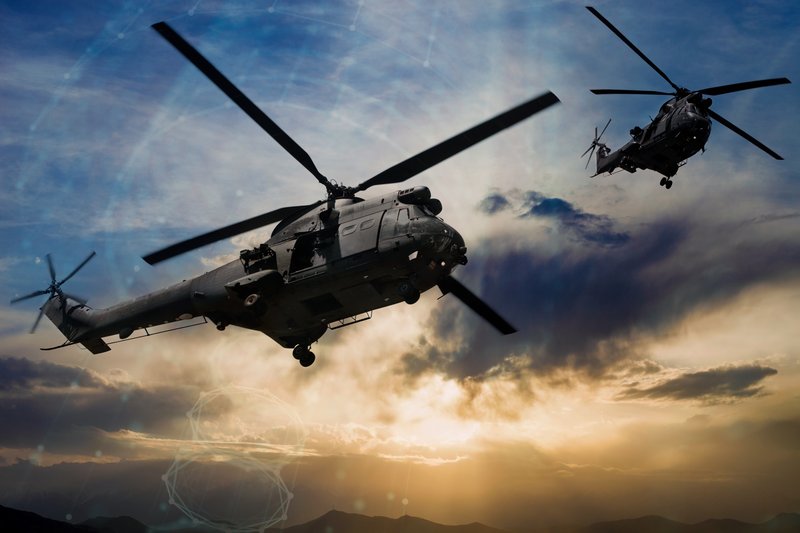
Defence OEMs and systems integrators have unique requirements.
For an end-to-end provider like Dell, this demands a constant emphasis on customisation around areas such as size, weight and performance, says Manu Shankar, business development director for the defence, safety and security vertical at Dell Technologies OEM Solutions.
The company optimises and customises its products to meet these demands, Manu says, covering the complete range of products from rugged tablets to military-grade storage platforms and hyper-converged infrastructures.
‘You exist because of your customers, so providing the capability that the customer needs is of utmost importance,’ Manu argues.
For example, Dell Technologies recently worked with a customer that needed multiple compute stacks in a restricted space.
Dell Technologies OEM Solutions Product Group and engineering teams developed a solution by providing a rugged workstation and ‘running a virtualisation software layer to meet the requirements in a single machine, providing better performance and the agility required’.
Defence is always a complex area, often demanding anonymity around a wide range of developments and activities, says Murphy. Such requirements can require complex innovation alongside operators.
For example, a customer might ask Dell Technologies to alter the materials in a product to make it lighter for use in the field, then have it recertified as a military-grade product. Classification restrictions mean the service may not reveal the purpose or use of the technology.
These dialogues are enhanced by a vast array of SMEs that Dell OEM can utilise to get the best answer in the shortest time. The knowledge of these SMEs includes former serving members of the armed forces, defence sector specialists and electrical and mechanical engineers with previous defence experience.
Dell’s innovation is not just a technological priority. Greg Moore, field CTO with Dell Technologies OEM Solutions EMEA, says its approach can also be seen in its relationships with its customers and the partnerships it has developed.
When combined with the company’s product development and the innovations pursued by Dell’s CTO office, these assets enable far-reaching insights into the future of technology.
Beyond the technology, Dell Technologies’ success stems from its track record as an employer, Moore explains.
As one illustration, the company has an impressive sustainability programme to reduce its environmental impact. It also operates a comprehensive employee resource group programme, enabling people from all backgrounds and interests to interact.
‘It’s a very open and inclusive place to work with excellent technology, great ways of dealing with customers, and really good ways of dealing with the environment,’ Moore says.
‘That makes me proud to work for Dell Technologies OEM Solutions.’
*Global Share based on 2021 Revenue, VDC Research, Worldwide OEM Solutions Provider
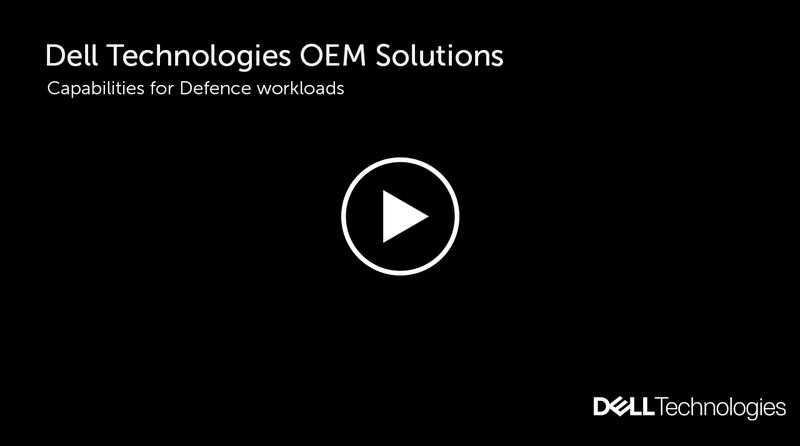
More from Studio
-
![Combat-proven capabilities: How precision-strike systems are evolving for tomorrow’s battlespace (podcast)]()
Combat-proven capabilities: How precision-strike systems are evolving for tomorrow’s battlespace (podcast)
Combat-tested technology is being reshaped to counter A2/AD threats, reduce reliance on GPS and enable faster, more autonomous targeting in complex environments. In this special podcast, experts explain how the evolving threat landscape is shaping next-generation strike capabilities.
-
![Energy evolution: How laser defence systems are powering the next phase of air defence (podcast)]()
Energy evolution: How laser defence systems are powering the next phase of air defence (podcast)
Laser-based air defence is moving from promise to deployment as global threats evolve. In this special podcast, we explore how high-energy laser systems are reshaping interception strategies.
-
![Intelligence advantage: How real-time GEOINT is reshaping military decision-making (Studio)]()
Intelligence advantage: How real-time GEOINT is reshaping military decision-making (Studio)
In today’s contested operational environment, adaptability is key. The new Geospatial-Intelligence as a Service (GEO IaaS) solution from Fujitsu and MAIAR empowers militaries by enabling intelligence advantage, combining advanced technology with human expertise to deliver actionable insights.
-
![Training Together: Unlocking Educational Excellence through Military and Industry Collaboration (Studio)]()
Training Together: Unlocking Educational Excellence through Military and Industry Collaboration (Studio)
Military training is ultimately about people. At Capita, training programmes are built on close engagement with partners, delivering an educational approach that can adapt to individual needs, cultivate leadership – and drive wider cultural change.
-
![Enhancing Military Training Through Digital Technology (Studio)]()
Enhancing Military Training Through Digital Technology (Studio)
Digital technologies offer huge opportunities for defence training. However, militaries must adopt an agile approach, placing the needs of their organisations and personnel at the centre of their efforts.
-
![Layered Defence: How new technologies are enhancing armoured vehicle survivability and manoeuvrability (Studio)]()
Layered Defence: How new technologies are enhancing armoured vehicle survivability and manoeuvrability (Studio)
As modern threats evolve, armoured fighting vehicles face a new era of challenges, from loitering munitions to kinetic energy projectiles. Advances in active, passive, and reactive protection systems are crucial to ensuring battlefield dominance, freedom of manouver and vehicle survivability.










